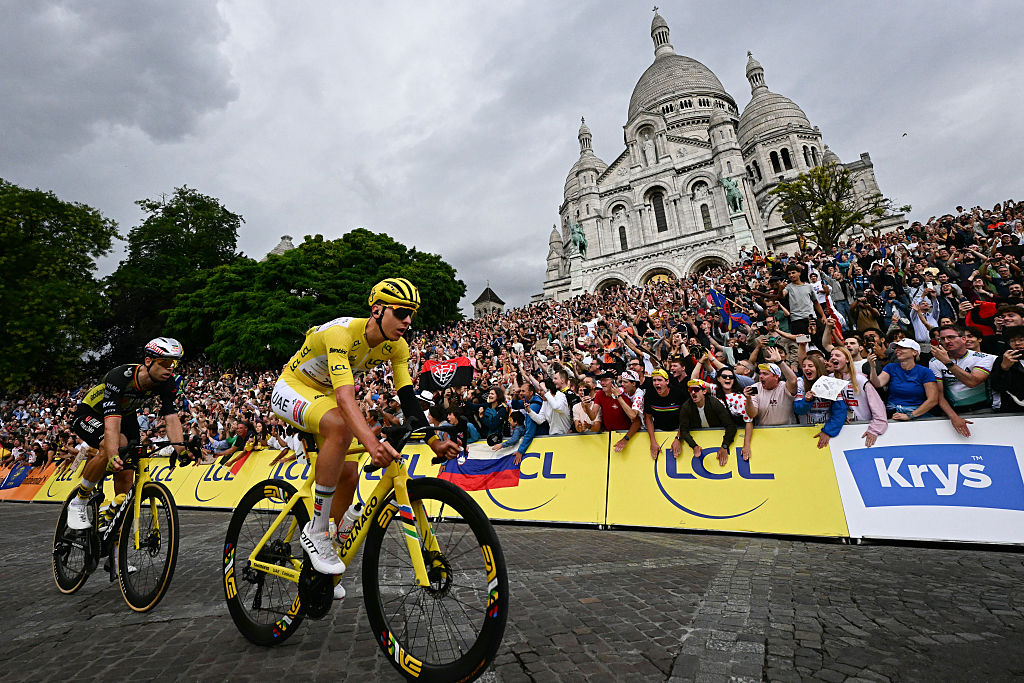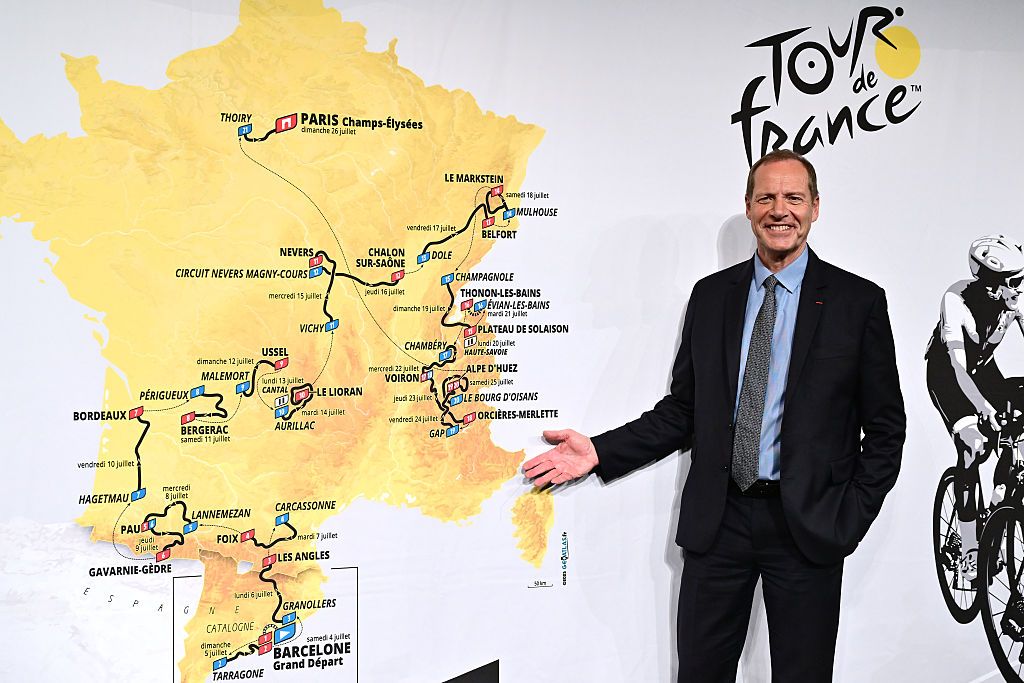Race director Christian Prudhomme has admitted the 2026 Tour de France route has an “in crescendo” design, with the hardest stages to L’Alpe d’Huez arriving at the end, to ensure the race remains undecided and so without Tadej Pogačar dominating for three weeks.
“The word that best sums it up is a Tour in crescendo,” Prudhomme told France Info after revealing the route of the men’s 2026 race alongside Marion Rousse, who presented the route of the 2026 Tour de France Femmes.
“We’ll start strong in Barcelona, then cross the five major French mountain ranges, and end with an unprecedented finale. Before the double Alpe d’Huez, no rider will be able to say they’ve won the Tour, even if they have a big lead.
You may like
“In this edition, there will be five summit finishes, including three in the three days before the finish in Paris. Even if the yellow jersey has a five-minute lead, they won’t be able to say they’ve won. Pogačar has already proven he can gain time on all terrains, but the course is designed in such a way that the tension will be in crescendo.”
Prudhomme is not trying to limit Pogačar’s chances of victory. Indeed, he has offered him a chance to make history with a fifth victory and recall a historic moment of the 1986 Tour de France, when Greg LeMond and Bernard Hinault finished together at L’Alpe d’Huez, the American winning his third Tour, meaning Hinault was unable to win for a sixth time.
“I imagine that when Pogačar sees there is L’Alpe d’Huez twice, he’ll want to win up there, like the greatest. It’ll be 40 years after Hinault-LeMond, that’s something special.”
Stage 20 from Bourg-d’Oisans, at the foot of L’Alpe d’Huez, is arguably the Queen stage of the 2026 Tour. It covers 171km and climbs the Croix de Fer, the Télégraphe and the Galibier before the fast approach to the 12.8km Col de Sarenne, and then an extra twist of the final hairpins up to the L’Alpe d’Huez finish.
You may like
Little known steep climbs and a new road to Montmartre

(Image credit: Getty Images)
The Tour de France will start in Barcelona, and so the Pyrenees will offer early mountain climbing but have a lesser impact on the GC battle. Stage 6 climbs the Tourmalet, but the 2026 Tour also visits several of France’s mountain ranges and climbs some little-known but very testing uphill roads.
The Col du Haag on stage 16 is on a recently asphalted bike path in the forest below the Grand Ballon in the Vosges mountains. It is 11.2km long at 7.3% and comes just a few kilometres from the Le Markstein finish.
“The Haag is part of our search for climbs with high percentages in the other mountain ranges. It’s a climb for the future, in the forest, where spectators stay safely all day, even if it’s hot,” Prudhomme explained.
“The Plateau de Solaison on stage 15 is also a very steep climb, magnificent scenery, with a rest day the next day, so it’s going to be tough. Then there’s the stage 18 finish to Orcières Merlette, famous for when Ocaña dropped Merckx in 1971.”
Despite the Barcelona Grand Départ, Prudhomme is not overly concerned about further pro-Palestinian protests like those that disrupted the Vuelta a España in September. The Israel-Premier Tech team have recently said they will rename and rebrand to secure its future, with Israeli team owner Sylvan Adams stepping back from his day-to-day involvement in the team.
“The international situation is not in our control, but it has changed. It has evolved in the right direction in recent weeks,” Prudhomme said.
“Furthermore, the statements made by the team concerned have calmed things down. Barcelona has always told us that it wants to make its Grand Départ the biggest in history.”
Prudhomme explained why ASO made changes to the final stage in Paris, so the climb to Butte Montmartre could stay in the race.
Some sprinters may still have a chance of victory in 2026 despite the 130km stage climbing up to the Sacré-Cœur three times because the final summit is 15km away from the finish on the Champs Élysées.
“The police chief said yes to repeating the Montmartre final circuit, but on one condition: we could no longer go through Rue Royale to return to Place de la Concorde. He wanted us to return via Avenue Wagram and therefore the top of the Champs-Élysées,” Prudhomme explained.
“This moves the finish line further away from the top of Rue Lepic. I don’t think we’ll have a bunch sprint but a sprinter capable of overcoming the hills, like Mads Pedersen, will have every chance.”

